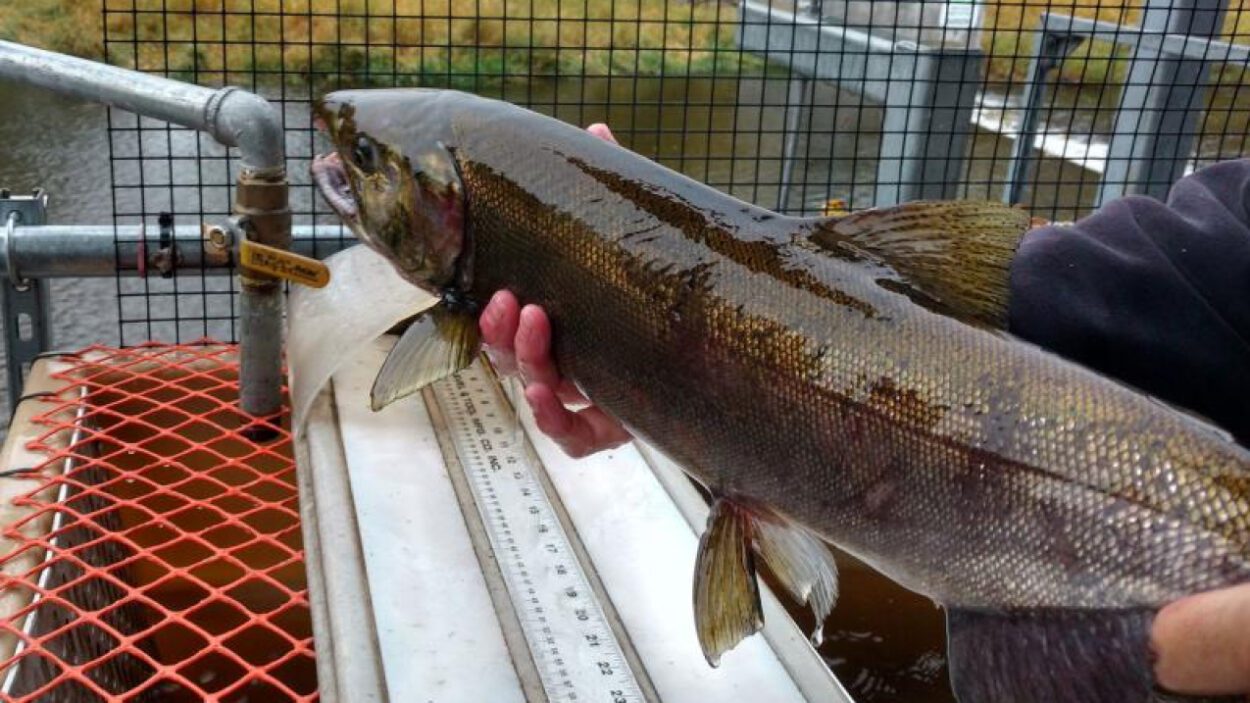
The Metlakatla Indian Community is receiving $2 million of federal funding for its tribally-owned salmon hatchery.
That represents a small portion of a total $240 million that is part of a Biden Administration promise to support tribal fisheries, as well as make good on treaty fishing rights with tribes along the Columbia River Basin in Washington, Oregon, and Idaho. The money is largely going to tribes in that area who used to survive off of the strong salmon and trout runs until they were tanked by the construction of dams upriver and say their fishing rights have long been neglected.
Of the 27 tribal hatcheries receiving funding, the Metlakatla Indian Community is the only tribe in Alaska that qualifies. They are the only federal Indian reserve in the state and thus, the only one with their own hatchery and commercial fishery.
“The funding came in at a very, very good time for us,” said Metlakatla Indian Community Mayor Albert Smith, explaining that they plan to use the funds to modernize their hatchery facility, which produces chum and king salmon. “The infrastructure is there. We’re just working to update and do maintenance and upgrade some things from aging infrastructure.”
He said the tribe recently completed a new incubation building that can house up to 180 million salmon eggs.
“What we’re trying to do with the hatchery, and in my opinion, what all hatcheries are trying to do is help stabilize the fishery,” said Smith. “For us with our hatchery, it’s going to help to ensure that our fish plant is sustainable, and we can, in our fishery, stay sustainable.”
For Smith, there are no promises in the fishing business. But he said a sustainable fishery is very important to the community.
“Today, hatcheries provide many of the fish that no longer come from the salmon rivers, the rivers that have been impacted by our dams and development,” said Jennifer Quan, West Coast Fisheries Administrator for the National Oceanic and Atmospheric Administration (NOAA).
Quan said the ostensible goal of all the tribal fish hatcheries receiving this funding is restoration and providing a consistent supply of fish for communities that have watched their runs collapse over the decades.
She asserted that, in some cases, hatcheries have even contributed to the recovery of wild populations.
“And more recently, hatcheries are becoming a critical adaptation tool for climate change and salmon conservation efforts,” she said.
Hatcheries in the Northwest are controversial though. Some critics argue that pumping out more hatchery fish to cover the losses in wild runs is a costly numbers game that doesn’t always pencil out. A University of Washington study of hatcheries in Kodiak and Prince William Sound found that they could even hurt the existing wild stocks — becoming more of a replacement than an augmentation.
Quan said she’s aware of these concerns.
“Hatcheries have been around for a long time, and we’ve seen the damage that they can do,” she said.
According to Quan, while hatcheries come with risks, they’re a necessity in combating the havoc that climate change and human development are wreaking on wild salmon habitats.
“I think the story that’s been missed along the way is the science and course correction that has been made,” said Quan, maintaining that the science has come a long way in minimizing risks to wild populations.
The 27 tribes will each receive $2 million initially. The rest of the funding will be awarded competitively in the coming months.





